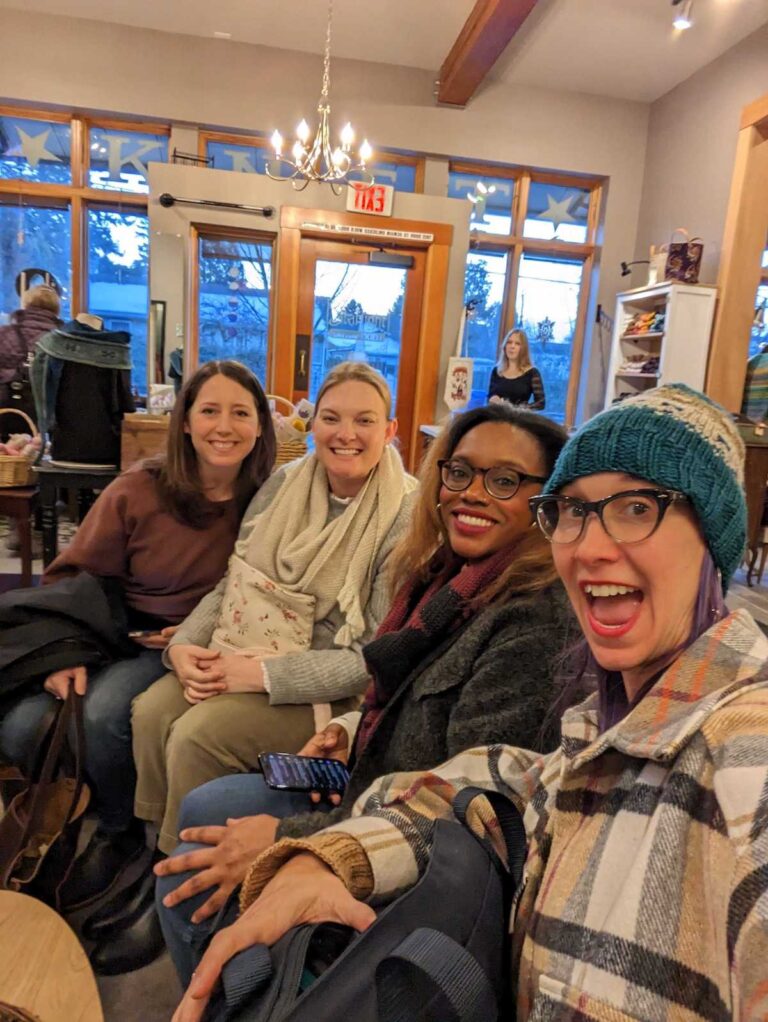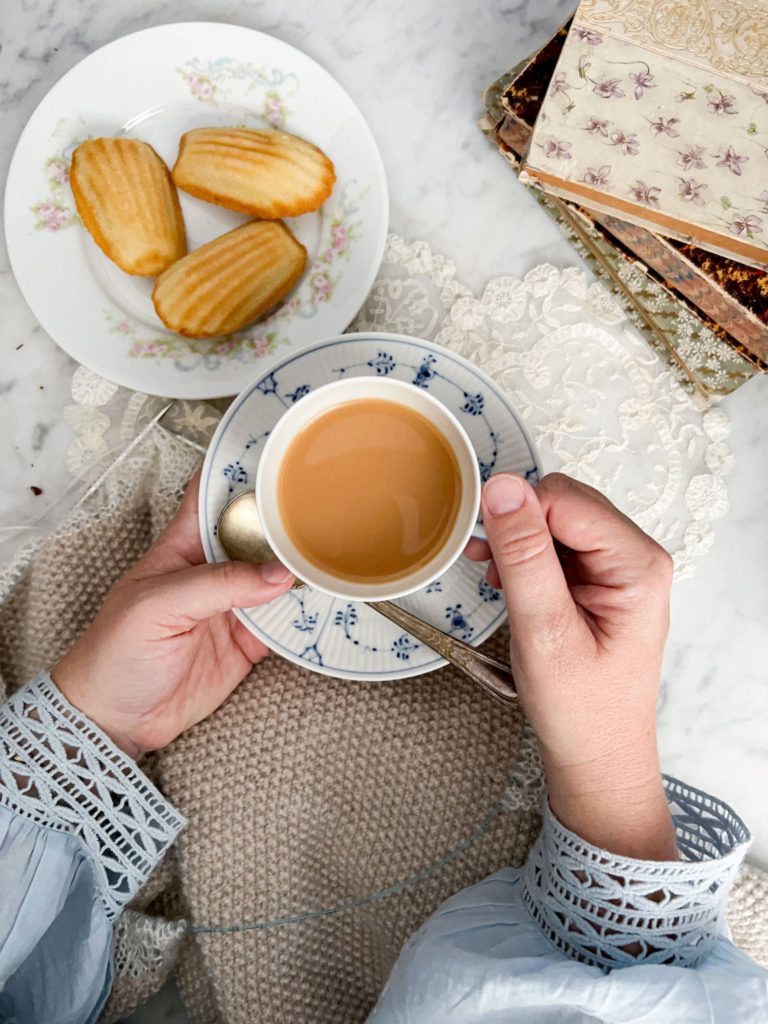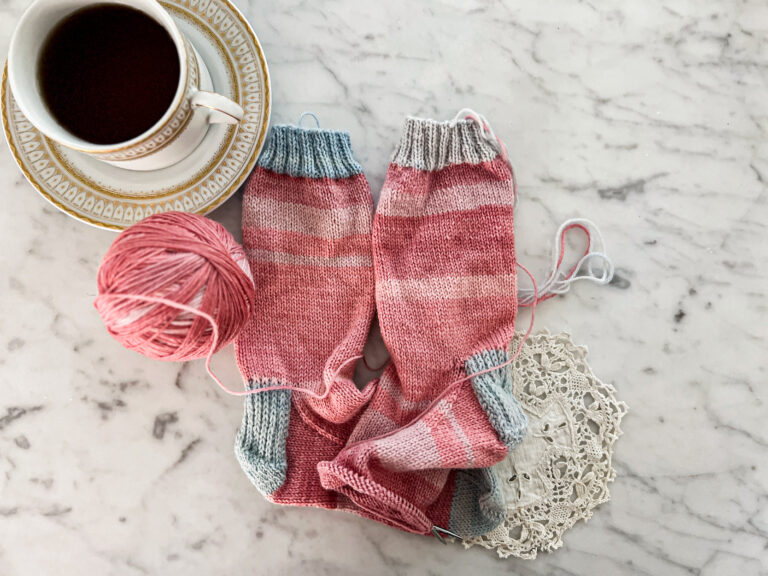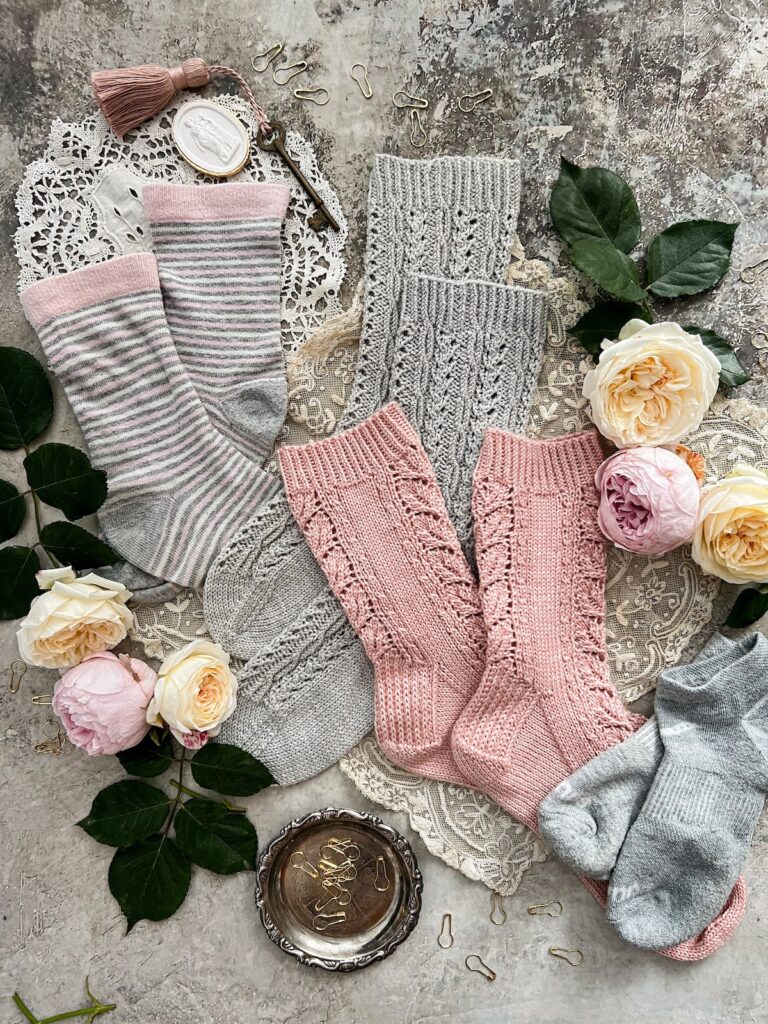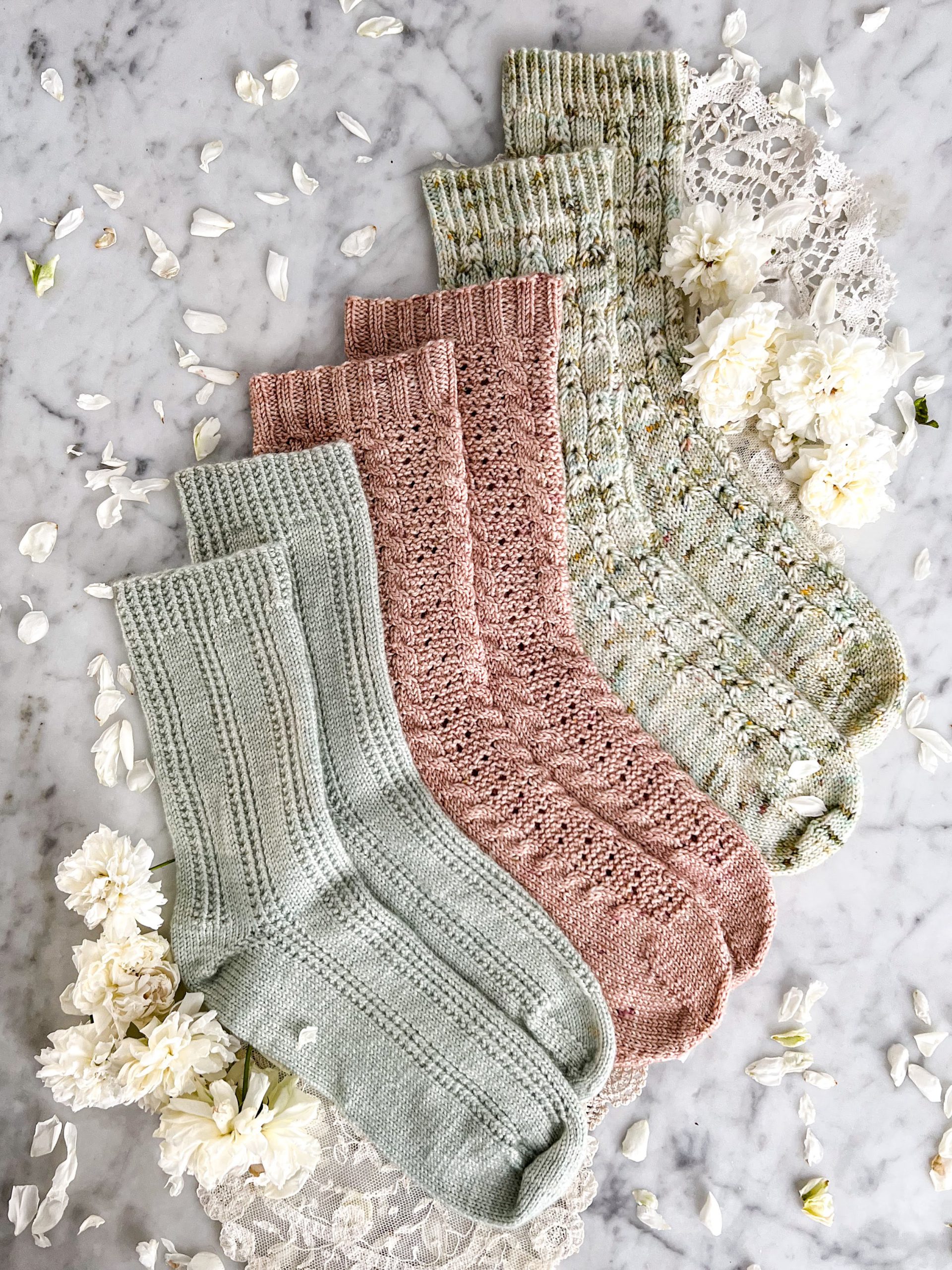I’m a bit of a magpie and, as a result, have all sorts of weird little collections around the house. One that isn’t weird, though? The Jasperware.
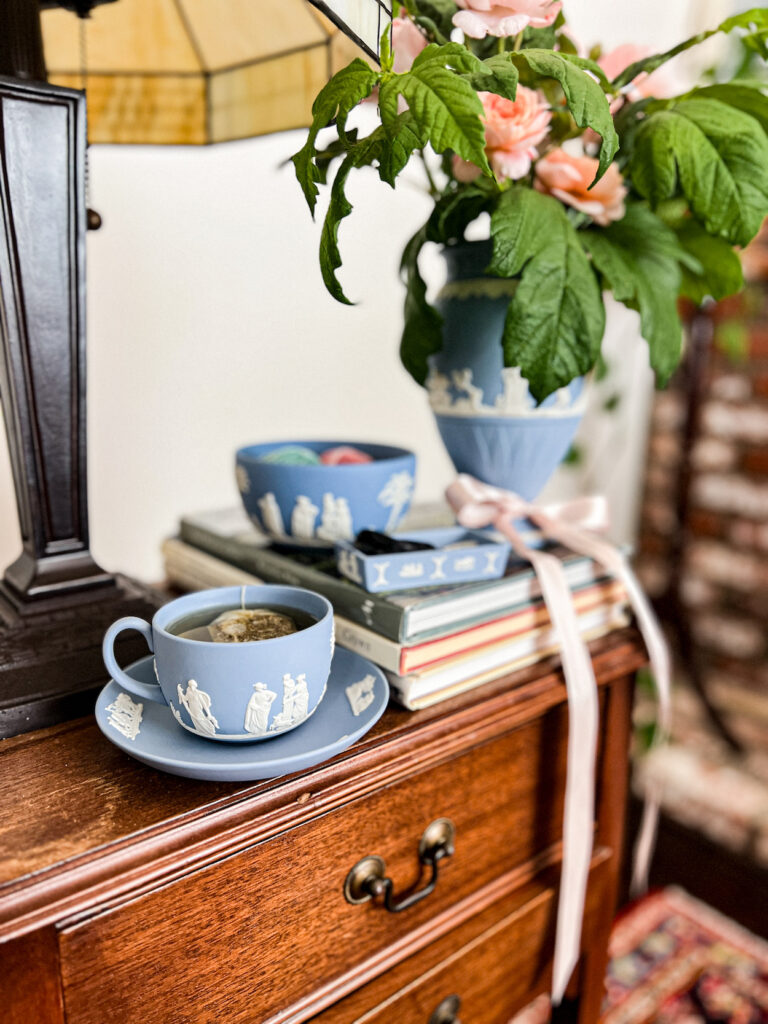
Jasperware is a classic pottery style developed in the late 1700s by Josiah Wedgwood, the founder of the Wedgwood company. While Jasperware has gone through some changes over the years, a few things remain constant: the matte finish, the raised surface embellishments, and its two-tone color palette.
I can’t remember when I first discovered Jasperware, but I bought my first piece at the Rose Bowl Flea Market back in 2011 or 2012. It’s the beautiful urn-shaped vase you’ll see in some of the photos in this post. I scored it for a ridiculously good deal, and then when I got it home, I discovered the original price tag inside and realized I’d gotten an even better deal than I had thought.
Since then, I’ve always kept my eye out for Jasperware at flea markets, thrift stores, and antique shops. I love its classic design, the way it blends in with a variety of decor palettes, and its elegant shapes.
In today’s post, we’re going to take a look at the history of this gorgeous pottery, why it’s so special, and how to spot your own good deals when you’re shopping secondhand.
A Brief History of Jasperware
Jasperware was developed by Josiah Wedgwood, an 18th-century potter and businessman. In 1759, Wedgwood founded his eponymous pottery company and quickly established a reputation among both wealthy elites and more middle-class consumers.
The founding of the company coincided with a period of renewed interest in classical art and architecture in the 18th century. Wealthy young men traveled through Europe on their Grand Tours, bringing home small souvenir intaglios and large pieces of classical sculpture.
You can see the influence of this trend in the motifs featured on Jasperware, especially on the earlier pieces. Scenes depicting the Fates, gods and goddesses, fables, and more are common. Later pieces often commemorate historical events (like royal weddings) or holidays.
The exact recipe for Jasperware remains a closely guarded secret and is the result of years of experimentation by Josiah Wedgwood himself. Pieces of Jasperware can be found in museums like the Met and the V&A.
Jasperware’s immense popularity influenced other pottery and porcelain manufacturers, too. For example, this beautiful chest of drawers below, on display at The Huntington, features little inlaid plaques that look like Jasperware from afar. Up close, though, something feels a little… off. The Huntington suspects they may have been created by the royal porcelain manufactory at Sèvres in imitation of Jasperware.
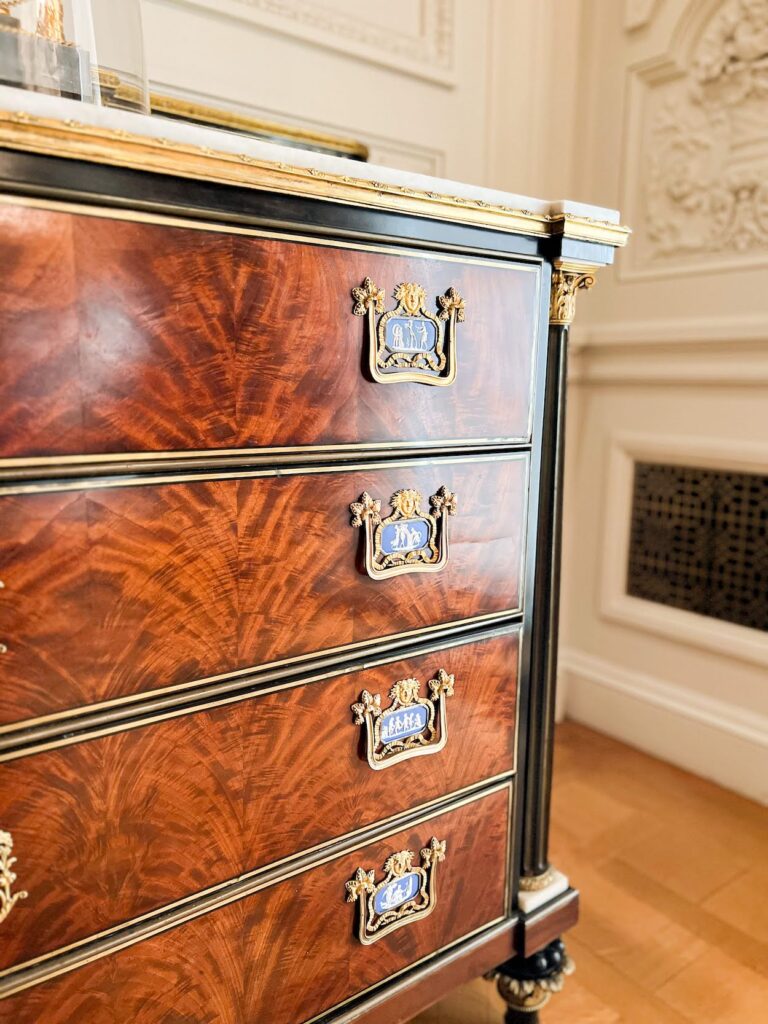
What Makes Jasperware So Special?
Jasperware took the fashionable world by storm when it first debuted, and there are a few reasons for its enduring appeal since then.
While Jasperware draws upon motifs and themes found in the ancient world, there was nothing quite like it before. The classical vases and pots that inspired early Jasperware pieces were either painted or made using cameo glass techniques (like the famous Portland vase).
Jasperware, though, uses matte pottery with color dispersed evenly throughout the entire colored layer (not just glazed onto the surface). The raised details are then applied as a separate layer before firing. It was a revolutionary development in the world of fine housewares.
In the 250 years since Jasperware debuted, it has retained its distinctive appearance. Most Jasperware pieces have a colored base with white details applied to the top (though some are the inverse). Wedgwood sticks to a limited color palette of mostly soft pastels, plus a vibrant deep blue and some black.
The raised designs on Jasperware pieces look, from a distance, like classical Greek pottery. When you get up close, though, those raised designs generate visual interest and are a deliciously tactile experience.
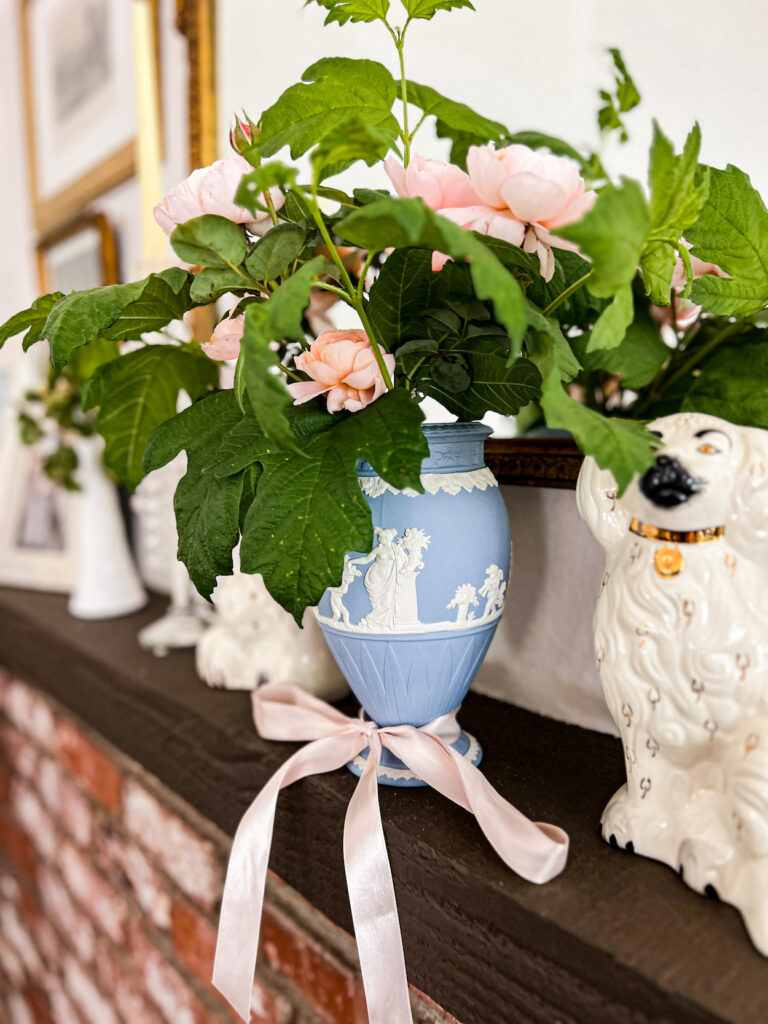
Tips for Finding Jasperware Secondhand
I haven’t bought a single one of my Jasperware pieces brand new. For one thing, brand new pieces are significantly more expensive than most used pieces (setting aside the true antiques and rare collectibles, of course). For another, I love the thrill of the hunt. Stumbling across a good piece of Jasperware out in the wild is always exciting.
If you’re looking to source some secondhand Jasperware for yourself, here are some tips to help you out.
1. Know What to Look For
Spend some time looking at authentic Jasperware. Wedgwood has certain colors that it uses in its Jasperware, and the company rarely deviates. Pieces can have white details on a colored background or colored details on a white background. Based on my own observations, the latter seems to be less common than the former.
While we’re on the subject of color, pay attention to the complexity of the colors, too. While there are some unusual pieces that have three colors in them, the vast majority will only have two colors.
Try to familiarize yourself with the various stamps placed on the bottom of Wedgwood pieces. These stamps have changed over time, so they’ll help you not only authenticate the piece but also figure out the approximate age of the piece.
Earlier Jasperware pieces will have finer, more delicate details. The raised elements may appear almost translucent in spots. Newer pieces manufactured in larger volumes will be less delicate but are still very pretty (all of my pieces currently fit into this latter category).
2. Where to Shop for Jasperware
Of course, you can always buy your Jasperware brand new directly from Wedgwood, but the selection is rather limited nowadays. For a wider range, it’s worth digging into the archives by shopping secondhand.
The possible sources for secondhand Jasperware are almost unlimited. If you know what you’re looking for and have a lot of patience, it’s worth regularly checking antique stores, estate sales, flea markets, certain thrift shops, and Facebook Marketplace. Because inventory sometimes turns over quickly in some of these spots, you should be prepared to visit as frequently as you can.
If you have less patience or are less confident in your ability to spot Jasperware out in the wild, you can also rely on online retailers who’ve done the hunting for you. Etsy, Ruby Lane, 1st Dibs, and online auction houses can be great resources for Jasperware.
Remember, some colors are more rare than others, as are pieces of a certain age or depicting particular scenes. Some will be harder to find than others. Half the fun of sourcing your Jasperware this way is that you never know when you’re going to stumble across a real gem. Take your time.
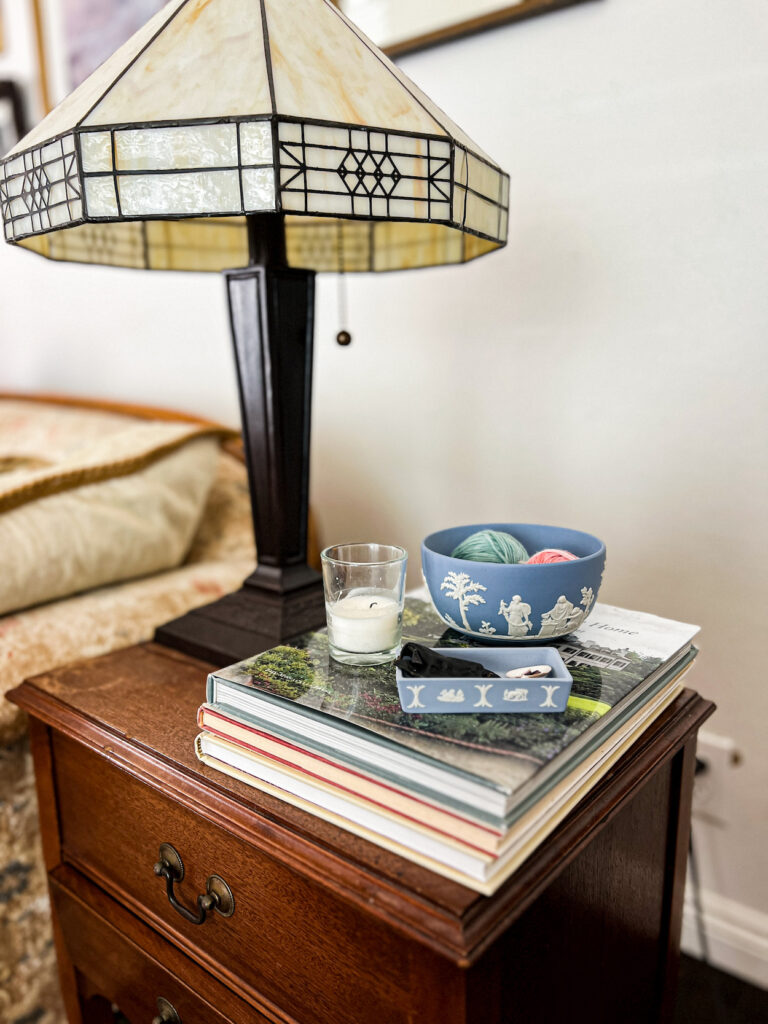
3. Examine Condition Carefully Before Buying
Jasperware is beautiful, but it’s not the most sturdy pottery. Wedgwood warns on its website that “[s]udden changes of temperature may cause cracking or breakage to the material.” Before you buy a secondhand piece of Jasperware, check it carefully for chips and cracks.
Some surface patina is common on Jasperware, especially due to its comparatively rougher surface texture. While out-and-out staining isn’t exactly desirable, a little discoloration here and there is to be expected.
4. Be Discerning with Price
When shopping secondhand, it can be hard to tell what might be a fair price for an item. That’s why it pays to do a little comparison shopping first. I like to look at online secondhand retailers to get a sense of what they’re charging for various pieces. If all the teacup and saucer sets are about $40-$60, for example, then I know a set that’s about the same age with the same colors/motifs is a great deal if it’s available for $30.
Ultimately, even if something is a great deal price-wise, it’s still not a great deal if you don’t truly want it. Don’t buy a piece just because it’s shockingly underpriced. Think about whether it fits well into your collection, whether you like the color and the motifs, and whether it’s in good condition, too.
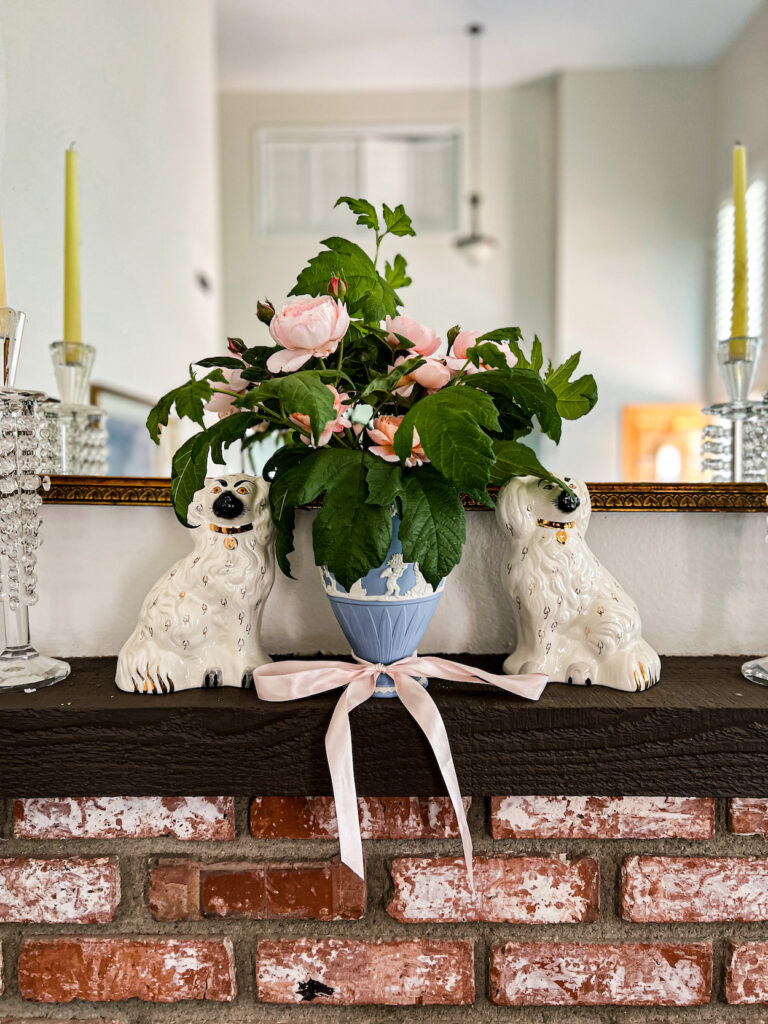
A Few Final Thoughts
If you’re looking to start a collection of Jasperware, remember that any good collection takes time. I’ve taken over a decade to build just this small collection. Taking your time helps you avoid the show-room effect, where everything feels too perfectly matchy-matchy and nothing feels personal.
That’s why I’m a big fan of sourcing your Jasperware secondhand. It practically forces you to slow down and savor the journey. You’re unlikely to find a 26-piece collection of matching candlesticks, teacups, vases, trinket boxes, platters, pitchers, and more in one fell swoop.
And really, where’s the fun in that, anyway?
A Shoppable Gallery
Because I’m me and can’t stop prowling the internet for treasures, I’ve had a whole bunch of Jasperware sitting in my Etsy favorites for years now. I can’t buy them all, so I decided to put them in a shoppable gallery here for you. Maybe one of these pieces will find a spot in your home.
These are affiliate links, which means if you choose to buy something through these links, I’ll receive a small commission at no extra cost to you. I will always identify affiliate links for you. Thanks for supporting my work!
Let’s stay connected!
Join my newsletter for 30% off all new releases, regular updates with helpful tips and tricks, first crack at registration for upcoming workshops, exclusive discounts, and more.
Prefer to read without ads? Join my Patreon, which starts at just $1 a month!
Join the A Bee In The Bonnet Facebook Group to participate in knitalongs and other fun community events
Come hang out with me on the A Bee In The Bonnet TikTok
Follow along on the A Bee In The Bonnet Instagram
Get inspired via the A Bee In The Bonnet Pinterest


